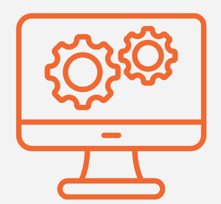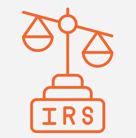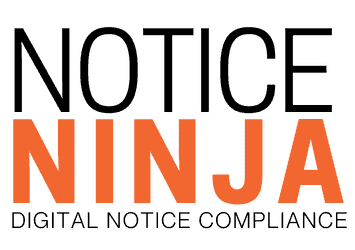Yes, NOTICENINJA is corporate tax notice compliance software that automates key workflows including notice assignments. The platform employs a rule-based system that can manage multiple level rules and ensure notices are directed to the appropriate stakeholder. As a result, you’ll never have to worry about notices being misdirected or slipping between the cracks.

How to Ensure Tax Notice Compliance

22 March
All businesses get tax notices. While many are informational, others require swift action. Ignoring tax notices risks fines, penalties, and other issues. Staying organized and controlling your tax notices is essential, separating those requiring action from those alerting you to something. Knowing what each notice asks of you is the best way to stay compliant.
There are many types of tax notices, and you must check each one you receive.
Quickly Interpret Your Tax Notice
 The first thing you need to do is quickly interpret your tax notice. You need to determine immediately whether the notice is strictly information or whether it requires action. You will often receive a follow-up if you don't act on a notice. For that reason, organizing notices is an integral part of how you keep IRS notices low.
The first thing you need to do is quickly interpret your tax notice. You need to determine immediately whether the notice is strictly information or whether it requires action. You will often receive a follow-up if you don't act on a notice. For that reason, organizing notices is an integral part of how you keep IRS notices low.
First, you should sort notices as informational or requiring action, then again, by who must respond to them.
Many tax notices do not require a response, which can mislead you into assuming you can ignore them. Only some IRS notices have online options to resolve.
Create an Internal Filing System
 Keep all tax notices, even if they are only informational. Informational notices can verify whether the IRS did or didn't make a mistake if you receive something later. For example, if you get a notice of overpayment, it will tell you how much money you should be getting back. You can then check that against the amount you actually received.
Keep all tax notices, even if they are only informational. Informational notices can verify whether the IRS did or didn't make a mistake if you receive something later. For example, if you get a notice of overpayment, it will tell you how much money you should be getting back. You can then check that against the amount you actually received.
Notices that require action need to go to the right person so they can resolve them. Informational notices need a filed record where the people who need to check them can find them.
Many companies do this using a spreadsheet, which tends to result in delays and confusion. The best way to file your notices is through automated software that digitizes notices and stores them in a central location.
Manage Payment Deadlines
 Some tax notices require that you submit a payment by a specific deadline. Keeping track of these deadlines is crucial to submitting payments on time but not so early to incur federal interest.
Some tax notices require that you submit a payment by a specific deadline. Keeping track of these deadlines is crucial to submitting payments on time but not so early to incur federal interest.
Again, a spreadsheet is not the best way to do this. Tax notice management software can send appropriate reminders to the right people to ensure you make timely payments. Late payments result in charges and interest. Some payments require quick payment to avoid being considered late, especially if the notice is already a notice of late payment.
 Send Notices to the Proper Person to Respond
Send Notices to the Proper Person to Respond
 All notices need to go to the proper person for a response. For example, notices related to payroll need to go to human resources, and notices pertaining to sales tax go to accounting. That also includes many informational notices that might, for example, inform you of a change in state payroll regulations.
All notices need to go to the proper person for a response. For example, notices related to payroll need to go to human resources, and notices pertaining to sales tax go to accounting. That also includes many informational notices that might, for example, inform you of a change in state payroll regulations.
Sometimes, you may need to copy a notice and send it to more than one person or department to ensure they have it. A centralized software system allows you to notify everyone who needs to see it and also when responding to things, so there is no risk of a double or redundant response.
Know When to Seek Professional Input
 Most of the time, you can deal with tax notices yourself. As mentioned, many are informational, and many others are simply reminders of payments to make.
Most of the time, you can deal with tax notices yourself. As mentioned, many are informational, and many others are simply reminders of payments to make.
However, if you owe significant amounts of money or the situation is unusually complicated, you may need help from a tax professional. That is particularly important for small businesses that may not have full-blown accounting departments.
You should always seek help if the amount owed is more than your business can realistically afford, as you may need to negotiate with the IRS or set up payment plans.
Stay Organized with Automation Software
If, after reading this, you are wondering how to organize tax notices, then you are not alone. Tax notices are an inevitable part of business, and everyone receives them. The best way to organize them is to use automation software to quickly sort and process tax notices, send them to the right person, and store them in a central location where everyone who needs access can get to them quickly.

